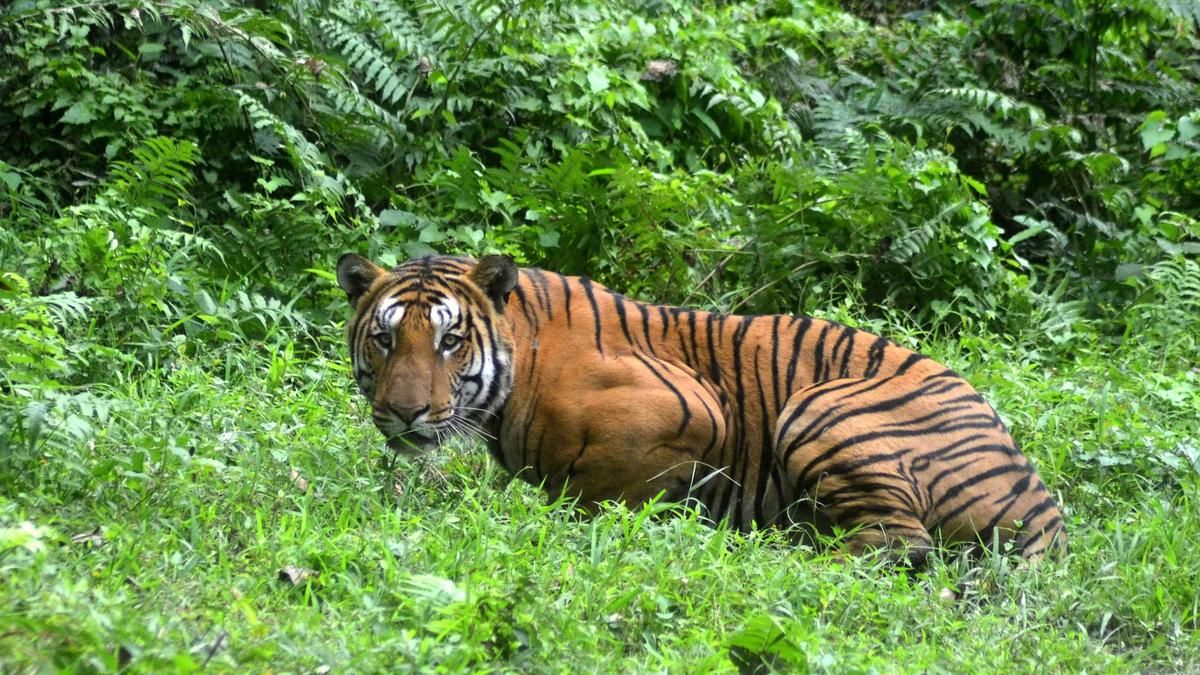
The tiger population in western Assam’s Manas National Park, a major wildlife preserve stretching into Bhutan, tripled from 2011 to 2019, a new study has said. File photo
| Photo Credit: STR
GUWAHATI
The tiger population in western Assam’s Manas National Park, a major wildlife preserve stretching into Bhutan, tripled from 2011 to 2019, a new study has said.
The report published in the latest issue of the Journal of Biological Conservation attributed this turnaround in a park that suffered because of prolonged armed conflict to increased funding, improved protection infrastructure, and a larger staff.
The study said the growth in the 500 sq. km Manas was supported by tourism revenue, which bolstered management budgets. The findings indicated that collaborative efforts from local communities, government, and conservation agencies can lead to successful species recovery in post-conflict scenarios.
“However, challenges like poaching and habitat loss persist, emphasising the need for continuous management focus as tiger populations approach their carrying capacity,” the report said.
Dipankar Lahkar of Aaranyak, an Assam-based biodiversity conservation organisation, is the lead author of the report. The co-authors are Aaranyak’s M. Firoz Ahmed, Ramie H. Begum of Assam University (Diphu campus), Sunit Kumar Das of WWF-India, former park managers Hiranya Kumar Sarma and Anindya Swargowari, former Wildlife Institute of India Dean Y.V. Jhala, independent researcher Imran Samad, and Abhishek Harihar, director of Tiger Program of Panthera.
“A factor behind the remarkable recovery of the tiger population in Manas in a post-conflict context is the extensive and interconnected forest areas in the India-Bhutan region,” Mr Ahmed said.
Mr Swargowari, a retired Indian Forest Service officer, emphasised the vital role of civil society organisations, grassroots conservation initiatives, and tourism organisations apart from cross-border collaboration in the “impressive resurgence” of the tiger.
The report said that during 2015-2022, international agencies such as Panthera and US Fish and Wildlife Services invested considerable resources and efforts alongside the local communities and park management, helping “dent the scenario of people depending highly on the natural resources” of the park.
“By training the park staff in improved and informed patrol tactics and communities on alternative and sustainable livelihoods, park entry by dependent people went down drastically over the last 10 years as most of those were able to achieve livelihood goals in and around their houses or villages,” the report said.
According to the study, the tiger population (adults/100 km2) density in Manas increased from 1.06 in 2011–12 to 3.64 in 2018–19 and has a high potential to grow to 8 or more. It added that the increasing trend could see the number of tigers in the park double by 2023 if conservation measures are in place and effective.
In 2021, a total of 44 adult tigers were photographed in Manas, one of Assam’s two tiger reserves designated as UNESCO World Heritage Sites. The other is Kaziranga National Park. EOM
Published – November 09, 2024 01:17 am IST










![Best Weight Loss Supplements [2022-23] New Reports!](https://technologytangle.com/wp-content/uploads/2022/12/p1-1170962-1670840878.png)




